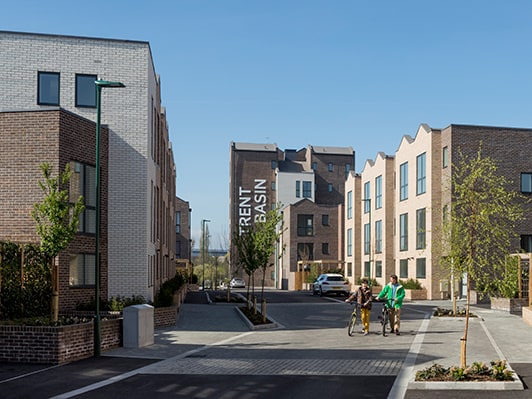Active buildings
Assuring affordable energy for heat and power whilst smoothing energy demand by load shifting and energy generation are the key challenges.
To protect our planet, we need to forge a new, zero-carbon future, where energy is generated from new and renewable sources. Our buildings need to switch to clean electricity for both power and heat; a seismic transformation, that completely alters the way we think about buildings and energy.
In the low-carbon future, buildings become part of the energy system. They will continue to demand heat and power, but they will do so when it is available and at the right price. They will generate and store energy to help smooth the demands on the grid, ensuring that the new energy system is clean, flexible and resilient.
Predicting electricity demand in UK homes
Renewable energy has the potential to provide heat and power to homes, but to mitigate unsustainable demand peaks it is important to capture the true half-hourly variations in demand.

Empirical modelling of energy demand
We have developed empirical models - built on monitored data collected in occupied homes - that predict the time variation of future electricity demands, and the peak demand and ramp rate that the energy system must provide. The estimates are substantially lower than those previously predicted. At the local, community level, empirical models help us understand how energy-efficient design and refurbishment affect heat and power demand profiles and the benefits of thermal storage and local energy generation.
Optimised photovoltaic systems
We are developing new, more efficient photovoltaic systems that can be integrated into buildings, focusing on the chemistry of surface coats, to improve durability and reduce maintenance for roof-top mounted systems.

Optimising cadmium telluride solar cells
Our research with international partners has shown how the addition of selenium helps increase the stability and efficiency of cadmium telluride (CdTe) solar cells. The work is hailed as an important step towards paving the way for improving the design of PV materials and devices. This work is part of the Active Building Centre, a national centre of excellence that brings together energy, construction, government and research to create a dynamic ecosystem that identifies barriers and creates solutions for scale up and deployment of buildings and communities that are active.
Thermal energy recovery and storage
Mobilized thermal energy storage can be used to recover and store industry waste heat, reducing both CO2 emissions and energy costs, leading to more efficient industrial activities. It also increases the availability of low-carbon energy for heating the residential sector.
Meet the experts
The experts below represent the broad interests of our researchers in active buildings. We look forward to hearing from you.



